X gives you hell in any name-place-animal-thing game, no less with the category “car manufacturer” added for car-nuts (like us) … unless you are Chinese. XIAOMI is known to most only as a cellphone manufacturer, but now completes the car enthusiasts´ alphabet by manufacturing an all-electric vehicle. This wouldn´t be worth mentioning if this were just another random Chinese EV (with scale models readily available as merchandise, of the ordinary SU7, too). This, however, not only gives any western name-place-animal-car-player hell, it gives Porsche and Tesla hell … green hell. This is because, if the car´s satnav senses the SU7 Ultra´s position being a racetrack with enough range in the battery, it unleashes its full potential of over 1500 horsepower that will accelerate it to 100 kph/62mph in just under two seconds and allow it to v-max it beyond 350 kph. A stripped version of this 2.3-ton four-door-five-seater recently shredded Porsche´s and Tesla´s lap-time records at the Nürburgring (video here) and thus creates quite a buzz and wow in the automotive world – in case you haven´t heard.
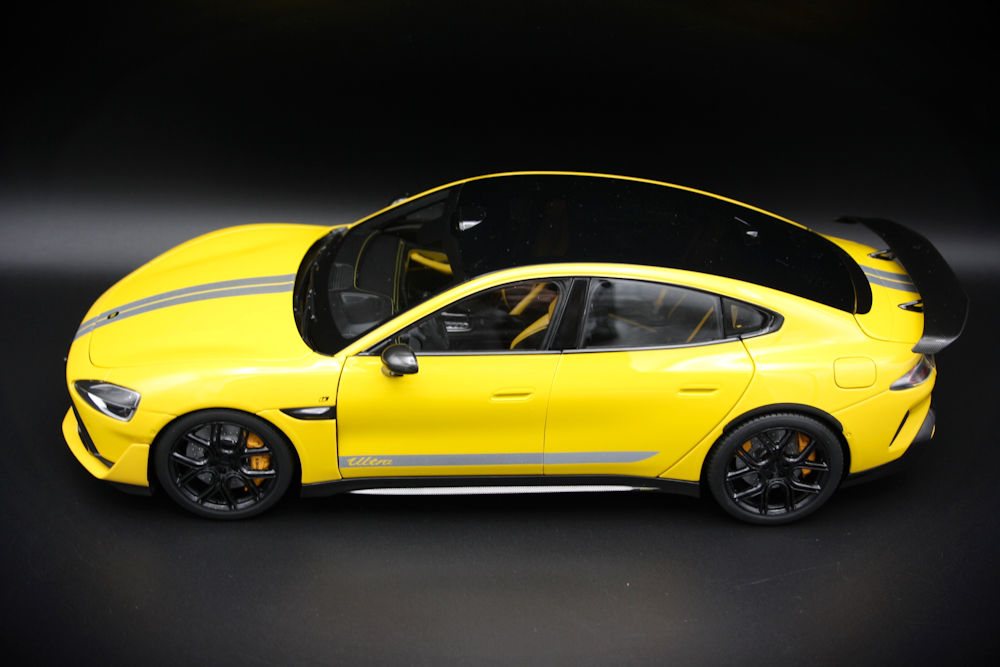
The model nicely captures the Taycan-esque shape, and the Ultra version has nice details to add to the normal SU7, like the silver racing stripes, carbon accents, carbon door mirrors, front spoiler with side-fins, the carbon fixed rear wing and the rear diffuser in its open position. Like the separate-piece charging port flap, none of these are functional, and the box warns you not to try. The Porsche-font “Ultra” script is not only found on the Chinese format license plates and embedded in the racing stripes along the car´s flanks in Porsche-style, but can be found on the carbon lip along the rocker panel and the center of the 21” wheels.
The tires are sadly not branded and have no valves, but Xiaomi-badged giant calipers and the carbon-ceramic brake discs standard on the Ultra are again a more impressive addition over what the normal SU7 model has to offer. I would have loved the addition of a thin yellow line on the rims, like you see in some pictures of the real car out there.
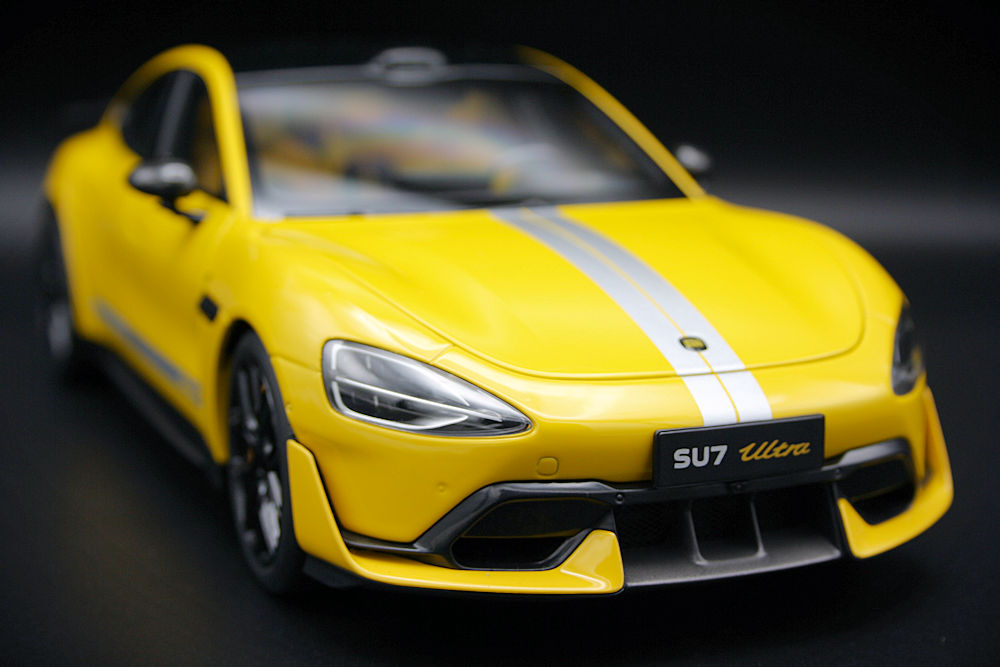
In the front, McLaren-style headlights offer nicely detailed projectors behind the lenses. The model has received the 24k-gold-plated badge as an elevated piece on the hood, and the lower grille is perforated, not just a structured plastic plate. The frunk does open, and although the struts that do it electrically on the original car are missing, the dog-legged hinge is true to the original. The inside of the frunk is only spectacular in having the plaque that proudly states the car´s performance figures underneath its silhouette.
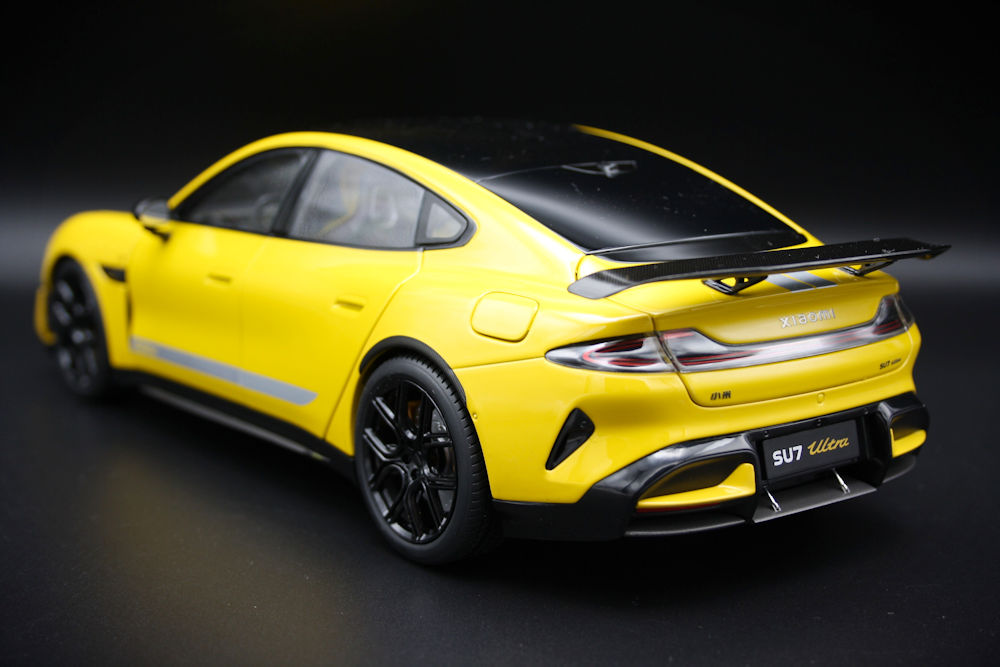
In the back, “XIAOMI”, “SU7 Ultra” and some Chinese signs are proudly badged as photo-etched letters. The rear lights are equally good with red LED stripes running behind the clear lens that is not gapped excessively by the trunk´s tight shut lines. In fact, they are so tight, the model has a transparent slip sticking out from inside the trunk to help you open it and find out what rattles in the boot, which got me worried about the delivery of the parcel, as it usually is a bad sign for a model that is not supposed to come with any fillers or separate parts. But upon opening it, you will find the trunk uncarpeted and a yellow/black rubber traffic cone, which, in fact, is a suction tool to help you open the model. Ironically, it doesn´t work on the trunk whose resistance is so strong that there is a real danger of slipping and ripping off the delicate, but nicely carbon-textured real wing.
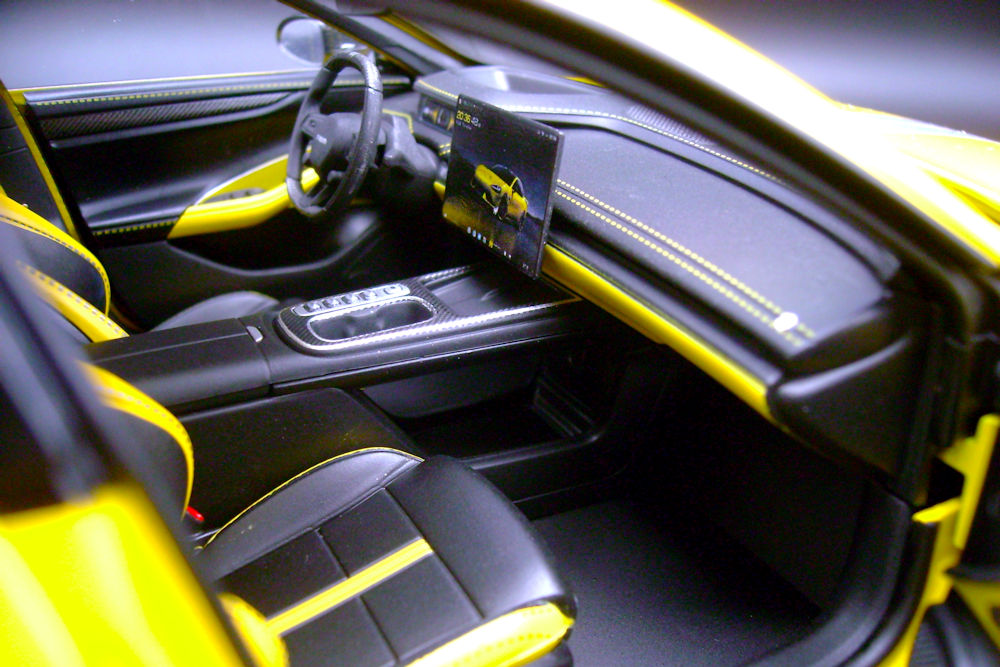

What it will help you do, though, is open the really tight four doors of the cabin and like on a real car with frameless windows, be advised to ever grab them by the windows as they might break. My first model arrived with such an issue in the box and had to be replaced. With due care, it´s absolutely worth accessing the cabin, greeted by a scripted threshold plate. You will hardly notice the missing carpet with the fireworks of other interior details offered. Again, more attractive than the SU7 base model, your eyes can feast on a two-tone yellow and black interior, including yellow stitching, yellow fabric seat belts and carbon applications. Notice the silver dots on each side of the dashboard near the doors? These replicate the mounting sockets the original car has to mount GoPro cameras to record the thing being thrashed around a track.

If you now feel justified (or compelled) to add this to your model collection, buying it is similar to buying the real car, too. Like the real car, the all-in-Chinese-box reveals that the model is not meant for sale outside China (yet), but is merely merchandise that does not fail to help boost sales of the real car in China. Like the real car, the model undercuts high-end models´ prices. A model of the ordinary SU7 (without hypercar performance) was originally available from Xiaomi´s website for some 60€ in China. The SU7 Ultra shown here cost me 120€ (before shipping, customs, etc.), which is Norev money, in the simplest no-nonsense edition with the model on a base in a Styrofoam shell and cardboard box. You can alternatively buy it in either an acrylic display case or a fancy suitcase-like gift and presentation box like the AR Paganis for a hefty premium, reflecting the buzz and pride in the Chinese market. As a model, I feel, this Xiaomi SU7 Ultra has made my collection more complete… not only alphabetically.


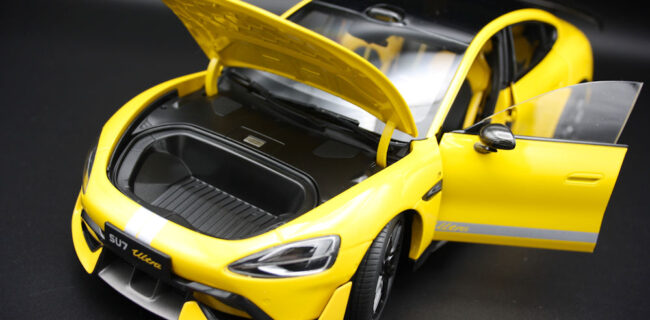

















Lovely review, sir! I did not know this car existed until we connected on it. I took the plunge and purchased one too. Not too shabby, even better than I expected in person. My personal gripe, not flocking interior-wise. Outside this, very nice piece!
The real car design looks just amazing.
Ferrari thinks so! Recently saw a video with this car at their headquarters. Are they trying to surpass the fastest EV!?